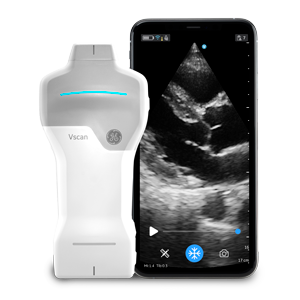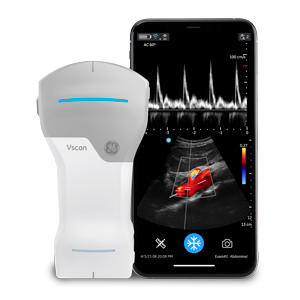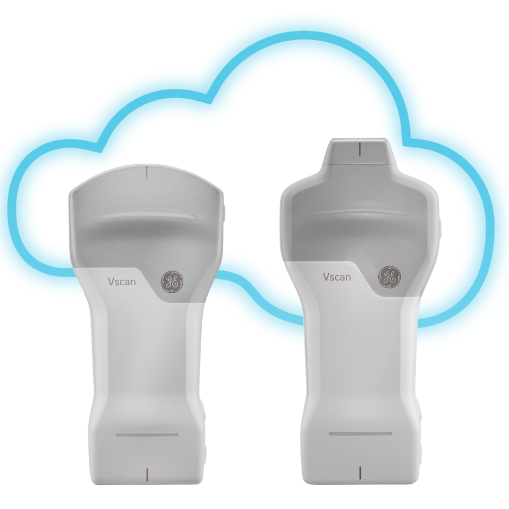
Pleural effusion is a common problem in many patient groups — in particular, for those in intensive care units and those with underlying cardiovascular issues. Fortunately, handheld ultrasound may aid in pleural effusion diagnosis.
How Does Handheld Ultrasound Play a Role in Pleural Effusion Diagnosis?
The typical method for diagnosing pleural effusion is by examining the patient with a stethoscope during a physical exam and then requesting a chest X-ray. Listening with a stethoscope provides some clues, and in order for X-ray changes to show, there has to be a significant volume of fluid. This can lead to a chest X-ray underestimating the amount of fluid present. Handheld ultrasound examination, on the other hand, may identify even just a few milliliters of fluid. Using a handheld ultrasound device is a quick way to identify the presence of pleural fluid and, therefore, can help in diagnosing pleural effusion.
As an article in Acta Radiologica identified, “Due to its ease of use and its high diagnostic yield, [hand-carried ultrasound] systems of the latest generation constitute a helpful technique for the primary assessment of [pleural effusion].”
This may be useful not only for acute pleural effusions, but also in the assessment of patients with heart failure. Pleural effusions can present as a part of worsening heart failure, and detecting them may help assess the patient’s progress. One study reported in the journal Heart concluded that “[u]ltrasound examinations of the pleural cavities and [inferior vena cava] by nurses may improve diagnostics and patient care in [heart failure] patients at an outpatient clinic,” although additional research is needed.
How Long Does a Pleural Effusion Diagnosis Take?
Learning to use a handheld ultrasound device to detect a pleural effusion is straightforward. The European Journal of Cardiovascular Nursing reported a study that concluded, “After brief training, heart failure nurses can reliably identify pulmonary congestion and pleural effusion with a [pocket-sized ultrasound device].”
Another article in the European Journal of Cardiovascular Nursing concluded the following: “Specialized nurses were, after a dedicated training protocol, able to obtain reliable recordings of both pleural cavities and the inferior vena cava by [a pocket-size imaging device] and interpret the images in a reliable way. Implementing focused ultrasound examinations to assess volume status by nurses in an outpatient heart failure clinic may improve diagnostics, and thus improve therapy.”
What Are the Benefits of Fast Detection?
Detecting pleural effusion via handheld ultrasound is a quick process. One study in the European Journal of Echocardiography identified that “[p]ocket- sized echocardiographic examinations of [approximately four minutes], performed at the bedside by experts, offer reliable assessment of cardiac structures, the pleural space and the large abdominal vessels.”
Ultimately, identifying a pleural effusion more quickly through handheld ultrasound examination (rather than waiting for a chest X-ray) may enable the delivery of faster patient care. Once quickly diagnosed, prompt management can be implemented — for example, by inserting a chest drain. This also potentially avoids the need for ionizing radiation through a chest X-ray.
Being able to perform quick and reliable bedside tests may lead to improved outcomes for patients. The Scandinavian Cardiovascular Journal reported the following: “Cardiac nurses were able to obtain reliable measurements and quantification of both PE and PLE bedside by focused US and outperform the commonly used chest x-ray regarding PLE after cardiac surgery.”
With all this in mind, it seems that using handheld ultrasound in pleural effusion diagnosis is a fast and accurate option.
To summarize, there are many benefits to both the patient and medical provider in using handheld ultrasound technology for pleural effusion diagnosis. Some of the main benefits include:
- Quick and accurate diagnosis
- Avoidance of radiation from X-rays
- Better detection of fluid that may go unnoticed from an X-ray
- Moving to treatment more quickly (due to quicker diagnosis)
- Better accessibility via handheld equipment
- Identifying the link between a pleural effusion diagnosis and other medical conditions, such as heart disease or heart failure
Related Resources
- Handheld Ultrasound
- Detecting Pleural Effusion with Lung Ultrasound [VIDEO]






